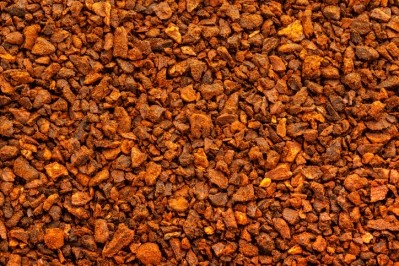Global Prebiotic Association 2019 End of Year Round-up
Prebiotic market potential beginning to crystallize: GPA

I say "beginning" very deliberately, since there’s so much work to do. We’re still a long way from meeting two major longer-term objectives, one of which is to have the right dialogue with regulators around the world, and the other is to create clarity about what a prebiotic is and does.
But, consumer awareness regarding prebiotics continues to grow. Over 80% of supplement users in the US (Trust Transparency Center survey of 1,000 consumers conducted in August 2019) now recognize prebiotics. Many of these consumers choose prebiotics specifically for digestive and immune health, indicating that the understanding that prebiotics are more than just another fiber source is relatively well understood.
We’ve also made some strides against pieces of our work plan, which while developed, evolves regularly, and has led to some lessons learned.
Category Stewardship
While we knew that one of our core challenges would be to steward the prebiotic category, saying that and truly understanding exactly what that entails at the various stages of our evolution is a very different thing.
The basic premise for an association focused on prebiotics was not dissimilar and takes very deliberately from what the omega-3 category was able to establish and then advance for that category. Creating common cause and alignment among companies as disparate as marine, algae and krill suppliers, with diverging regional and global cultures and priorities was not easy and took years.
Our prebiotic market too features disparate players, features and priorities, and getting alignment and consensus will at times be a challenge, but should follow the trajectory and path of the omega-3 category. Finding common cause among the many existing and emerging prebiotic types (i.e., inulin, polyphenol, resistant starch, FOS, GOS, XOS, HMO, lactulose, and bacteriophage) companies doing business around the world was never going to be easy. 2019, though, represents an excellent start for GPA and for the category.
Of particular note, at our Members Meeting at SupplySide West, we were truly global, with representation from both Europe and Asia, and had supplements and beverage brands represented within the membership in addition to the many ingredient categories. This was significant.
Following SupplySide West and another well received prebiotic education workshop, our team traveled to FNCE (Food and Nutrition Conference and Expo). In front of thousands of dietitians, we were able to fully understand both the opportunity and challenges ahead as this audience was eager to engage, understood that food sources of prebiotic ingredients in the typical diet were woefully inadequate, and generally was as ready for the conversation as we were to have it.
Building the category on science
Another key lesson we’ve learned is the need to be opportunistic. Our data shows that the digestive health market is growing and other health conditions remain great targets, as the science and substantiation get to these categories. This includes inflammation, satiety and blood sugar management as obvious emerging areas, with cognition closely related in its potential.
Increasingly accurate mechanistic studies, better in vitro models, the general interest in academia in microbiome research, and the support from VCs and other capital sources for emerging companies in this space all bode well for 2020 and beyond.
2019 was the year that certain polyphenols were recognized by ‘experts’ to show prebiotic activity and this opening up of the space dramatically beyond fibers was a watershed moment that bodes well for other ingredients poised to make it through this evaluation and validation. It has also become apparent that prebiotics and synbiotics (formulas containing both probiotics and prebiotics) will take an increasing share of the digestive health market for supplements, and not only in the US.
More than pills
Beyond supplements, prebiotics are finding their way into a broader base of bars, powders and beverages, and in functional doses. This is noteworthy as it stands at odds to another industry practice, one where GPA will frequently be forced to take a stand – category exploitation with dusting of products with ineffective doses.
All too often in our healthy products marketplace we see bandwagon jumpers use the popularity of the latest category in a race to the bottom until the noise and nuisance devalues the category. We’re working to prevent that in prebiotics, but there are signals from 2019 that this battle will be significant as companies exploit the term.
That’s a key reason that GPA put forward its prebiotic definition and inclusion set as a major communication initiative – we felt we needed that red line established. (The GPA definition reads “A prebiotic is a nutritional product and/or ingredient selectively utilized in the microbiome producing health benefits”).
It’s taken others well over a decade to evolve, be recognized as their global category voice and execute on major items in their respective workplans. 2019 was an extremely successful year for the Global Prebiotic Association—one which has assured us that the category does need stewarding, it’s poised to make a huge impact on human health and that our voice will be heard.

















